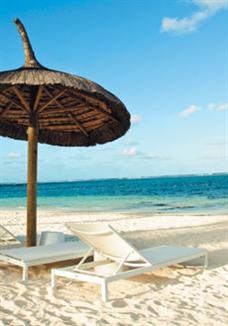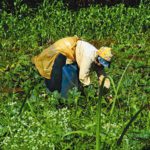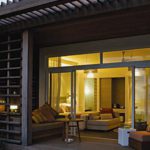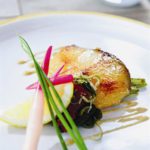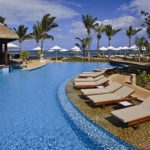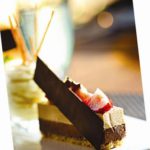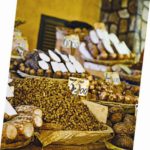Mauritius is the stuff of movies and dreams, the place we imagine holds relaxation and romance, where all worries are washed away by the turquoise ocean.
Dominique Brown
Home to rolling mountains, crystal clear warm water and welcoming people, it’s no wonder that South Africans have long been flocking to this Indian Ocean paradise. Whether you are on honeymoon or enjoying a family getaway, the Mauritian people will ensure that your stay lives up to your expectations.
Resort living
Mauritius is populated by a host of extravagant resorts. Along the 330km coastline, dotted among rural villages, you will find numerous getaways offering luxury living, fabulous food and a host of activities. Our first stop was the relatively new resort of Long Beach, which is situated on the east coast of the island. With a contemporary aesthetic and a design geared around indoor and outdoor living to cater for all elements (the east coast can get a little windy), it’s a new take on an old favourite: five restaurants clustered around a central piazza. In close proximity to Long Beach is the award-winning Le Touessrok.
This elegant resort offers a golf course on a private island as well as beaches that are accessible only via the hotel or boat. Head over to the opposite coast, a mere 45km away, and you’ve got the glorious establishments of Sugar Beach and La Pirogue. My room at Sugar Beach was literally a hop, skip and a jump away from the white sand and water’s edge. Floating in the warm tropical aqua, I understood the drawcard for stressed-out South Africans. Everything here is geared to relaxation, from the proximity to the beach to the friendly and affable staff, and the sound of the gentle waves lapping on the shore. My most difficult choice? Which pool to move on to next! With offerings of live entertainment, a host of restaurants to choose from, a fantastic spa and loads of activities for the kids… well, you never have to leave.
Wild waters
For those who do want to leave the resort there is a plethora of activities around the island to keep you busy. Bobbing around on a catamaran is certainly a pleasurable way to see the island from another perspective. Sporting a cozzy and clutching my suntan cream, we set off for a fabulous day. Sunning myself on the deck, I was waited on by the capable and smiling crew as they searched for dolphins.
Finally we caught a glimpse of these majestic creatures as they broke through the surface of the water and rollicked around the boat. Snorkelling was followed by a lunch of braaied dorado, sausages, chicken and prawns. Sun-kissed and content, we alighted to a scene indicative of another of Mauritius’s exciting offerings – deepsea fishing. Helpers groaned in exertion as they hoisted a 440-pound (200kg) marlin into the air. Now that’s what I call freshly caught fish!
The two jolly Englishmen who had landed the beauty were flushed with delight and exclaimed that their hands were far more used to typing than wrestling with a beast of this size – just goes to show anyone can be a fisherman with the right help. There’s always parasailing, kayaking, diving, windsurfing and skiing if you’re not into big game fishing, or try the underwater sea walk, a submarine visit to a shipwreck or a trip on an underwater submarine scooter.
Not just a feast for the eyes Mauritius is a melting pot of cultures, which are usually defined in terms of religion – with a mix of Hindu, Muslim, Christian and a small proportion of Buddhists. The melting pot is repeated in the island cuisine. Creole food, like the language, is an amalgamation of the different people who found themselves on the island centuries ago.
Favourites of the locals include basmati rice, lentils, pineapple with chilli, an Indian bread called chapati, fish and chicken. A traditional sauce, rougaille, consists of tomatoes, onion, chilli, garlic and ginger, and often ingredients such as salted fish are added. Curries and anything with a kick are favoured, but beware – the Mauritian palate is accustomed to heat so watch out for their innocuous-looking green chilli.
Fish and seafood are frequently found on the menu. Smoked marlin is delicious and offered at every meal, including breakfast; you’ll also find red snapper, dorado and tuna. A delicacy of the island is the palm heart, harvested by paring down the trunk of a palm tree to its core. Only 30cm of the entire tree is eaten, hence the name of a commonly found dish containing palm heart – ‘millionaire’s salad’.
Because of its resilience to cyclones and ability to grow in the volcanic earth, a large percentage of the land is farmed for sugar cane. Beef and dairy farming is minimal, and these products are mostly imported. Veggies are widely grown and if you’re cooking for yourself you’ll find a smorgasbord of locally grown produce at the markets.
We took a trip to the waterfront in the capital of Port Louis and encountered a market of vast proportions: bulging puce beetroot, plump sweet potatoes, juicy carrots and tasty coconuts were flanked by fresh root ginger, baskets overflowing with chillies and lovely ladies fingers (okra). If you’re not staying in a self-catering environment, never fear, the resorts are well equipped with fantastic chefs who have had incredible culinary training.
At Long Beach, we were treated to a tasting menu of stratospheric proportions at the fine dining fusion restaurant Hasu. The Japanese menu has touches of Italian, thanks to the collaboration of two Michelin-starred Italian chef, Moreno Cedroni, and passionate Japanese chef, Haruyama Masa. Plump prawn and calamari tempura, lavender-infused sake and black cod were among some of the delights that we sampled. Executive pastry chef Sandy Scioli had me in raptures with her incredible macaroons and astonishing desserts.
If that’s not enough…
Don’t leave Mauritius without tasting the local rum. Many flavoured variants abound but be sure to try the oak barrel fermented rum from Chamarel, which has been taken from the first juice of the sugar cane – at a hefty 50% proof, it’s not for sissies! Cup the glass and warm the liquid to ensure easier drinking. For those with a sweet tooth, there is sugar tasting on offer on the north coast where you can compare 15 different types of this saccharine delight. Le Monde, a mountain situated in the south-west of the island, has links to the slave trade and has been declared a UNESCO World Heritage site; there are hiking trails in the area for the fitter traveller. Horse racing has a long tradition on the island and meetings are held every Saturday, from April to December, at the Champ de Mars racecourse, the oldest in the Indian Ocean.
Whether you’re looking for a peaceful beach-based holiday, an adventurous sporty jaunt or a culinary quest, you can find it all in the markets, mountains and mosques of Mauritius.
Dominique was hosted by Sun Resorts at Long Beach Resort and Sugar Beach Resort, and flew courtesy of Air Mauritius. Visit the World Leisure Holiday website at www.wlh.co.za or call 0860 954 954. Air Mauritius flies from Joburg on Tuesdays and daily from Thursday to Sunday, and from Cape Town on Mondays and Fridays.
SOURCES
Dylan Swart

